Keys to Successful Organic Gardening
Spring is finally here: I can't wait to resume gardening. Gardening develops patience, resilience and hope, amongst other leadership virtues. It builds community, improves physical and mental health. If like me, gardening is your daily zen meditation, then this post is for you. Come lets share gardening ideas.
HOBBY: GARDENING
Emmanuel Epie
3/24/20258 min read
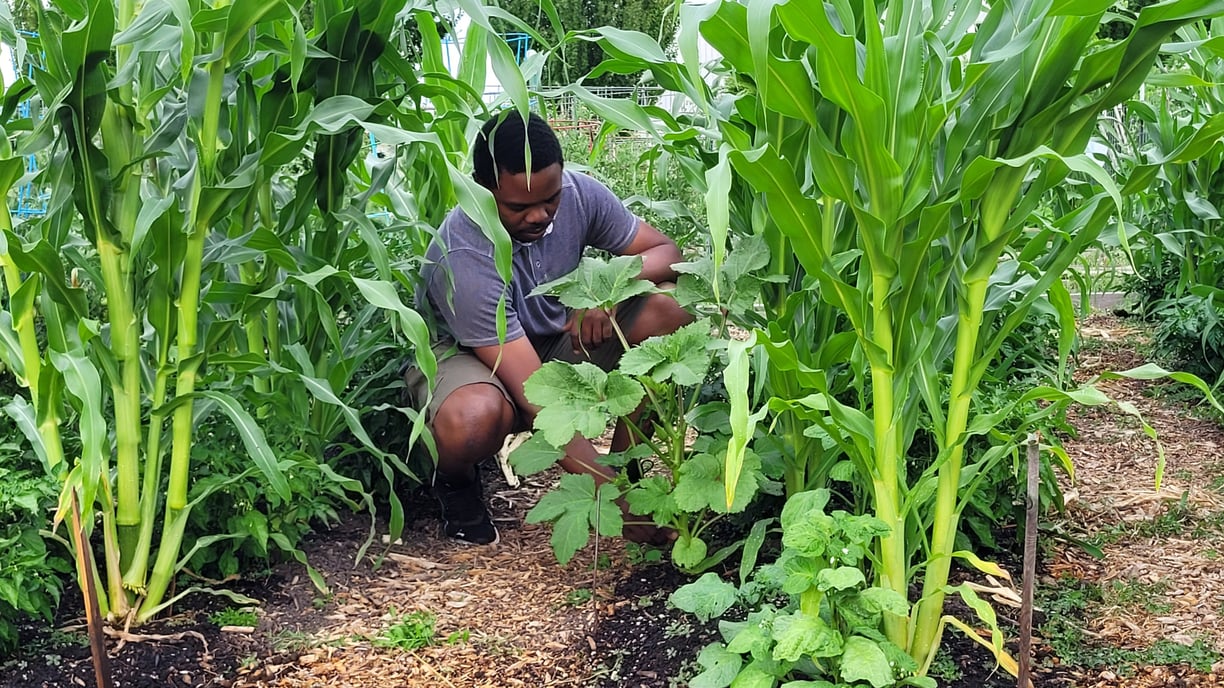

I am originally from Cameroon, Central Africa, and my family has been doing subsistence farming for generations. We are blessed with abundant fertile volcanic soil, all year round rainfall and a warm temperate climate: ideal conditions for farming. We grow food and raise animals to feed the family and sell the excess as a source of income. Our gardening style is purely organic and ecofriendly. This means we do not use chemical fertilizers, herbicides or pesticides. We use animal droppings and dead leaves as manure to enrich the soil. Rain provides most of the water. We simply focus on planting, weed and pest control. We are mostly proactive rather than reactive, and this method has served us well for generations.
To us, farming also provides an opportunity to connect with the natural world, exercise, bond with the family/community, study/passdown the history and traditions of our people, improve our mental and physical health. When it is farming time, everyone, including the youngest member of the family, is involved. This activity teaches us responsibility, hard work, resilience and promotes a sense of community. We all look out for each other. Thus, when I arrived the United States, I missed this great tradition. I tried to replace it with studies, but it did not feel the same.
Sometime in 2018, I asked my kids where food comes from and their answer shocked me: “From the store”, they answered. That was when I decided to resume gardening. After searching for land to cultivate, I was fortunate to learn about the Hillsboro Community Garden Program. I immediately applied, even though it was past the registration deadline. Surprisingly, there was an abandoned lot that no one wanted because it was improperly cared for by the previous owner. I was issued this lot. With hard work, patience and some learning from other gardeners, I was able to transform it into an oasis. Everyone who passed by was surprised at the transformation. I made many friends in the process, thereby regaining the sense of community: gardeners often stopped by to complement me and share their gardening experiences. Since then, I have volunteered as a lead lot inspector and served as the Hillsboro Community Garden Program Coordinator with the Parks and Recreations Department at the City of Hillsboro.
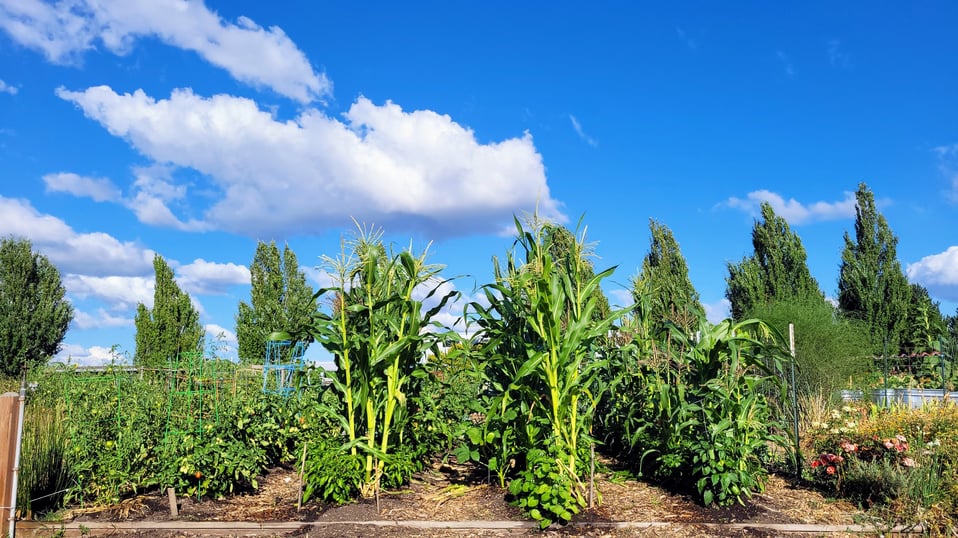

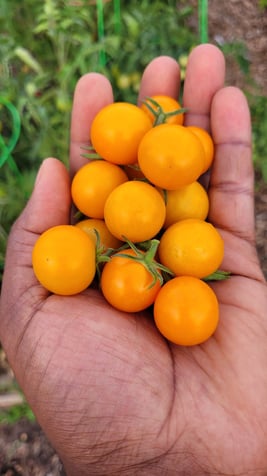

“To Plant a garden is to believe in tomorrow”. Audrey Hepburn
Organic gardening in Hillsboro is challenging because of the sticky soil, prolonged winter and unique pests. However, my past gardening skills and newly acquired ones have made me a thriving gardener since 2018. In this write up, I will share some useful organic farming techniques. I continuously improve by learning from challenges and other gardeners. There is no one size fit all with gardening, but if you are willing to get your hands dirty, learn and never give up, you will reap a bountiful harvest. Below are my learning on successful gardening.
1. Wait For Warm Sunny Weather Before Starting
It is important to wait till the temperature reaches at least 70 degrees F before you start gardening. Most seeds will simply not germinate in frozen soil. Plant starts will wilt and die under extremely cold weather. I have learned this the hard way. Now adays, I typically start gardening around the second or third week of May after at least two consecutive weeks of warm sunny weather.
2. Prioritize Soil Health
Healthy soil is the single most important input in your gardening. Compacting soil is not good as oxygen can’t get through. Avoid walking on your garden beds, it leads to compaction. Ensure your garden layout makes room for well demarcated walking pathways for weeding and delivery of amendments. Oregon soil is hard and sticky like clay. Digging the top soil and mixing it with natural chicken manure (sold in stores like Fred Meyer, Lowes, ACE and Bi-Mart) helps aerate and adds nutrients essential for healthy plant growth. Digging also makes it easy for young seedlings to grow healthy roots. Additionally, applying fish fertilizer can help improve the survival rate of young seedlings: typically, a few cups mixed with water in a watering can is all you need. You can get it from Fred Meyer.
3. Carefully Chose Your Plants
In Oregon, the warm weather ideal for plant growth and ripening is only about 4 months. Timing is therefore crucial. It is important to select plants that will mature within this narrow window. I typically plant peas, beans, corn and Okra early from seed. As for Habanero, tomatoes, bell peppers, lemon grass, squash, Zucchini, and herbs, I plant them from starts. This gives them an early head start and ensure they mature and ripen while there is still enough sunlight.
4. Water Properly
Proper watering is essential for plant growth. Water is expensive and so, you do not want to waste it. Water needs to penetrate the soil so that plant root can grow deeper. Avoid overhead watering as most of the water simply evaporates into the atmosphere. Also, spraying water on leaves can wash away useful pest control chemicals secreted by plants and render them susceptible to pest and fungi attacks. A good watering practice is to use a drip irrigation system. If that is not available, make sure to keep your garden hose as close to the roots as possible for a few minutes until the soil is saturated with water before moving to the next plant. In the early stages, watering every day is important. Once the plants have developed roots and healthy leaves, you may reduce watering frequency to once every two to three days. However, on days when there is a heat wave, it is recommended to water young plants at least twice daily and older plants at least once daily. Plants, like humans, also need a good water supply on hot days. Mulching your beds with dry leaves help preserve water in the soil, especially during very hot sunny days.
5. Remove Weed Early and Frequenly
Weed, if left unattended, will choke your plants. You do not want anything to compete with your plants for resources. It is therefore important to remove weed from your garden at least once every month. Mulching your beds with dry leaves will also help discourage weed from sprouting.
6. Attract Pollinators and Useful Insects
Planting flowers like crimson clover, Fava beans, roses, etc not only add beauty to your garden, and discourage wild weeds but also attracts pollinators and adds nutrients to the soil. Pollinators are essential for polination and pest control.
7. Practice Proper Pest Control
Pest control is a big challenge for organic gardening. The best approach is to be proactive. Most plants are adapted to fight pests naturally by producing chemicals to repel them, attracting beneficial insects that prey on pests and forming symbiotic relationships with other organisms that help control pest populations. Basil, garlic and lavender are known for their strong scent that repels many pests. Pollinators attract insects that feed on pests. For example, ladybugs eat aphids, lacewings eat mealybugs and ground beetles eat a variety of pests. Additionally, planting a variety of plants can create a complex ecosystem that attracts beneficial insects and makes it difficult for pests to establish stronghold. I typically plant tomatoes, corn, habanero, bell peppers, peans and beans all mixed up in the same lot.
Spraying young plants with neem oil and sprinkling sluggo will deter pests like aphids and slugs from eating young plants. Hanging bird scare reflective tape and plastic bags helps keep birds away from my sweet corn, at least for a few weeks.
8. Install Cages and Trellises Early
Plants like tomatoes, peppers, beans, peas, cucumbers and other vines need proper trellising or caging to provide support, improve air circulation, prevent disease, maximize space and yield and improve plant exposure to sunlight. Trellising/caging provides sturdy framework for plants to climb and grow vertically towards light instead of creeping and getting tangled on the ground. It also provides an effective use of garden space. Keeping vegetables and fruits off the ground protects them from some diseases and pests. Trellises/cages also make harvesting easier as fruits and vegetables become more accessible. I typically install trellises/cages as soon as I plant so that I can easily direct the plants while they are young: doing it later risks breaking branches and destroying the very plants you want to safe.
9. Prune Properly
Proper pruning promotes healthy growth, reduces risk of disease, improves air circulation and light penetration, stimulates new growth, encourages flowering and fruiting and improves overall plant health. Not all plants need pruning. Tomatoes and habanero, however, grow healthier and produce more/healthy fruits if pruned early. I typically wait about two months before pruning: that way, I can easily identify and prune out branches are less healthier branches while keeping the healthier and more viable ones. I typically leave 3-4 branches and cut out the rest with a sharp knife or scissors. Additional pruning can be done later if necessary. If the pruned branches show signs of disease, I throw them away while using healthier ones as much. If pruning is neglected or improperly done, it can be detrimental to these plants’ health and yield.
10. Winterize Your Lot with Covercroping or Mulch
After harvest, it is important to clean up your lot and mulch with dry leaves or plant cover crops like fava beans and crimson clover. Both methods will prevent wild weed from overrunning your lot in early spring and taking up nutrients. Cover cropping also helps enrich the soil.
Depending on your region, soil type and climate, your experience might be different from mine. Please share your experiences in the comment section below so that we can all learn. Happy gardening!
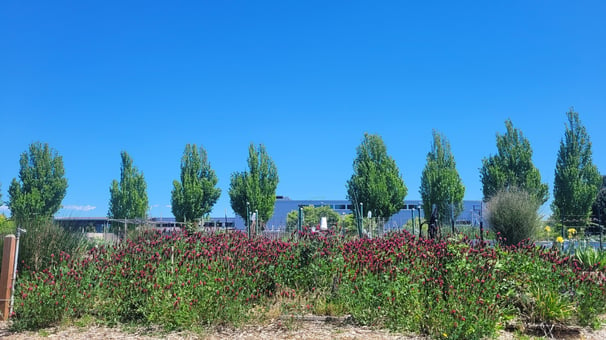

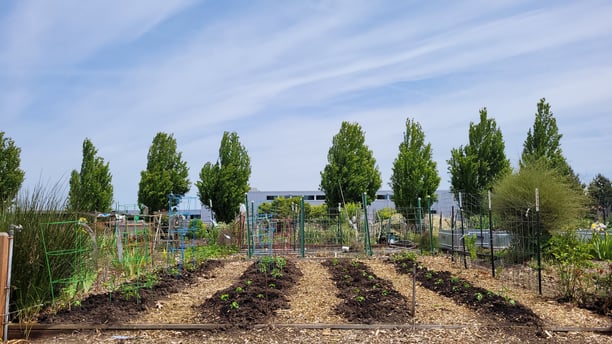

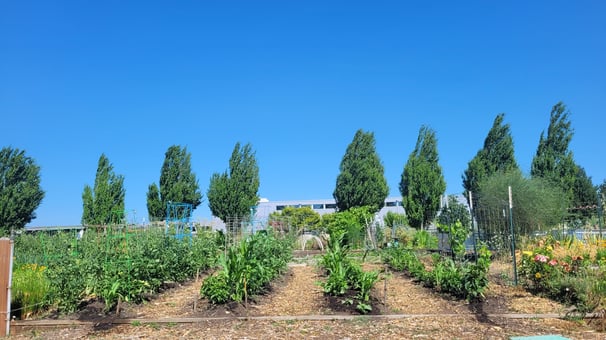



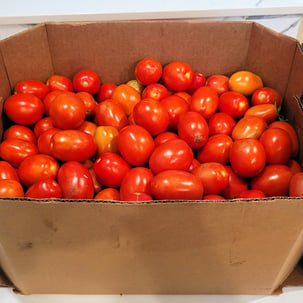
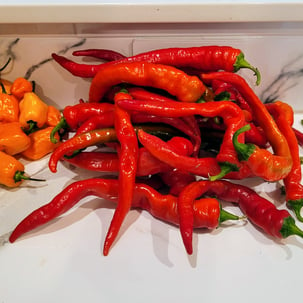
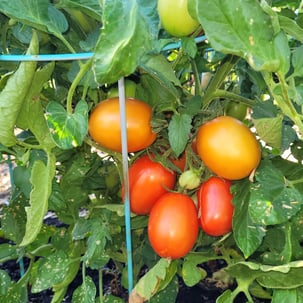
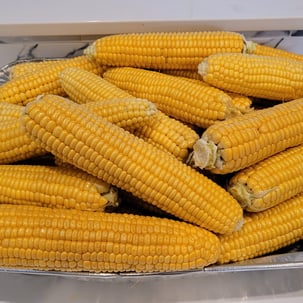
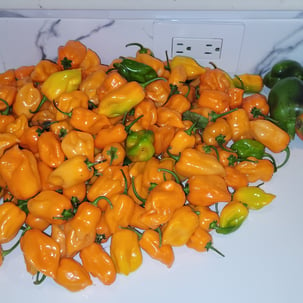
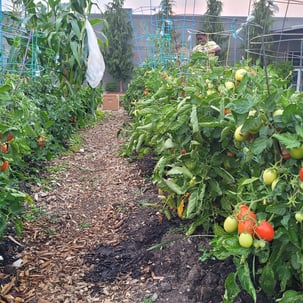

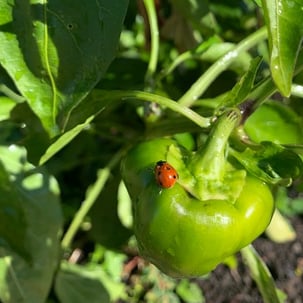
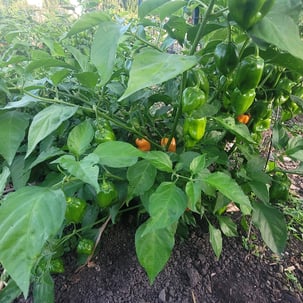
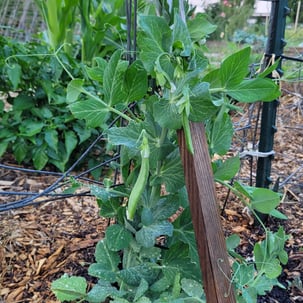
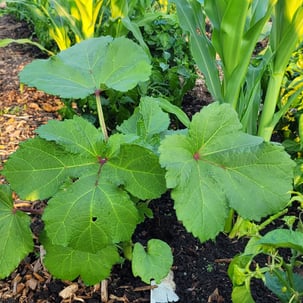
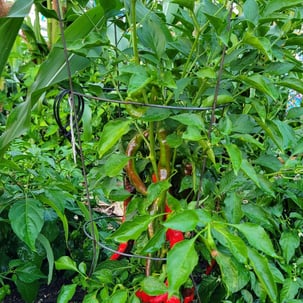
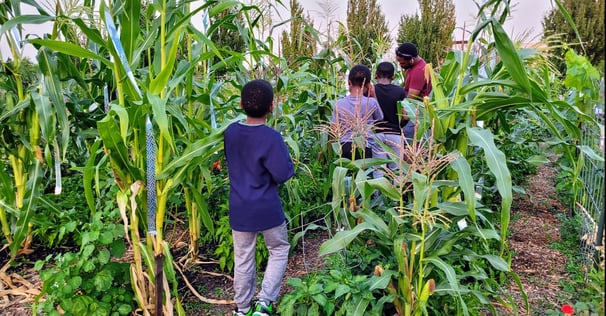

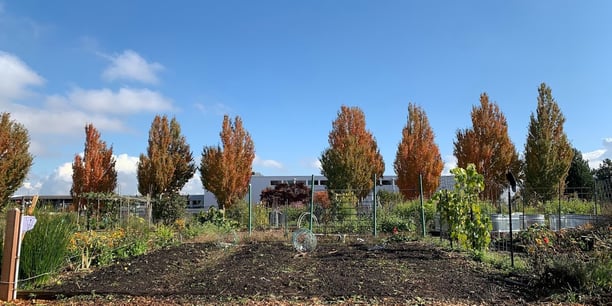

Kids are an important part of the process. They now know where food comes from: certainly not the store.
Lot is cleaned and ready for the winter. Crimson clover seeds have been spread. A suitable alternative to cover croping is mulching with dry leaves.
Evidence of a bountiful harvest.
Crimson clover from last fall is in full bloom. Time to prepare lot for cultivation
Soil tilled, chicken poop manure added and plant starts introduce. Garden requires daily watering and so much attention at this stage. Notice woodchip on pathways.
Few months in. Garden does not need daily watering at this stage but weeding is necessary. Woodchips on pathway discourage weed and prevent errosion.
Garden is bearing fruits. At this point, watering twice a week is just fine. Weeding is still neccesary but frequency reduces to at least once every 2 months.
If you enjoy our content and wish to support with a cup of coffee, click this support button. Thanks!


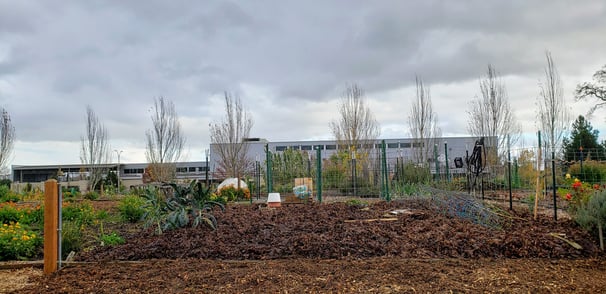

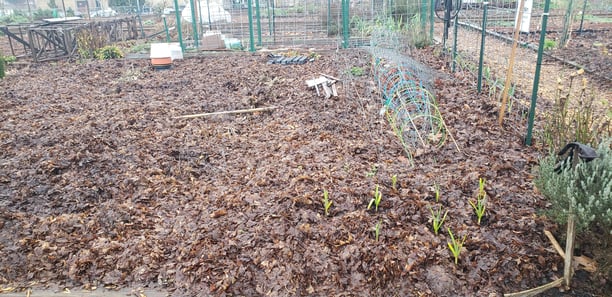

In the past, I have also winterized with a thick mulch of dead leaves
I have equally experimented with planting garlic under the mulch. It worked pretty well. Garlic is resistant to frost and matures early the following spring, serving as a pest control while providing a delicious spice.
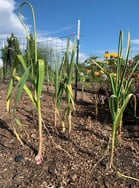

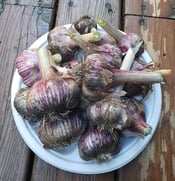

Quovitek Consulting LLC
Helping Manufacturers Thrive
info@quovitek.com
(832) 662-3581
Designed and built by: Epie and DizzySolutions © 2025. All rights reserved.
